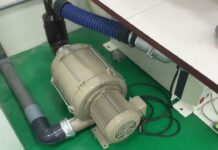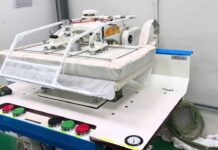How to Wire a Thermocouple to a PLC
Các câu hỏi, thắc mắc, thông tin liên quan đến sản phẩm được giới thiệu trong video dưới đây từ khâu mua sắm, lựa chọn, sử dụng, cài đặt hay thay thế, vui lòng liên hệ với INO Team (Đại lý, Nhà phân phối, Partner tại Việt Nam) để được hỗ trợ và tư vấn kịp thời.
– – – LƯU Ý – – -: Với những thiết bị không được liệt kê ở đây không có nghĩa là chúng tôi không hỗ trợ được bạn, Công ty chúng tôi chuyên đề xuất giải pháp, tư vấn mua sắm và cung cấp thiết bị về:
Nhiệt độ (tiếp xúc và không tiếp xúc), áp suất và chênh áp (Cơ và điện tử), lưu lượng, mức bồn bể, dò tìm rò rỉ khí nén, chẩn đoán bẫy hơi, đo mức bùn và mật độ bùn trong xử lý bùn và xử lý nước thải, camera quan sát ở nhiệt độ cao cho lò luyện thép và cán thép, camera cho lò nung Clinker nhà máy xi măng, pressure chart recorder, thiết bị siết bu long bằng thủy lực, khí nén hoặc bằng điện, động cơ, nguồn PLC, PLC, Biến tần, khởi động mềm, biến trở lỏng cho nhà máy xi măng, đầu đốt, burner, cảm biến quang học, cảm biến laser, cảm biến tiệm cận, siêu âm, thu nhận dữ liệu, lưu trữ và truyền dữ liệu (Data logger), chẩn đoán tình trạng động cơ bằng rung động, thiết bị hiệu chuẩn nhiệt độ, áp suất, thiết bị bảo trì đa năng, thiết bị siết lực, hiệu chuẩn và cân chỉnh, thiết bị phòng Lab…
Công ty TNHH Giải pháp và Công nghệ Đo lường INO, nhà cung cấp các thiết bị đo lường và tự động hóa công nghiệp.
▶ C’mon over to https://realpars.com where you can learn PLC programming faster and easier than you ever thought possible!
▶ You can read the full post here
https://realpars.com/thermocouple-plc
⌚Timestamps:
00:00 – Intro
00:36 – Junctions and voltages
01:08 – Thermocouple types
01:57 – Connect a thermocouple to a PLC
03:06 – 1) Connected directly to PLC
03:59 – 2) Located at a distance from the PLC
=============================
In this video, we’re going to show you how to wire a thermocouple to a PLC analog input module. We’re also going to discuss thermocouple Cold Junction Compensation and challenges when working with Extension wires.
A thermocouple is made up of two dissimilar metal wires. These two dissimilar metals are joined together at one end and open at the other end. The joined end is called the Measurement Junction.
Heat applied to the Measurement Junction will produce a voltage across the open end. As the applied heat increases, so does the open-ended voltage.
Thermocouple manufacturers have purposely chosen metal wire pairs that produce 0 volts at 0 °C.
Certain wire pairs have become popular as industry standards and assigned letters to indicate their Type. For example, a Type K thermocouple is made from alloys Chromel and Alumel.
Thermocouple Tables have been produced listing the resulting voltage at specific temperature values.
Well, if we want to make a temperature reading it seems easy enough!
All we need to do is measure the open-end voltage. Unfortunately, it isn’t that easy.
– First of all, the voltages produced are very small and the actual change in voltage per degree Celsius is minuscule.
– Secondly, as soon as you connect a measuring device to the open end, you create more junctions that create unwanted voltages!
Most PLC vendors offer Thermocouple modules. These specially designed analog modules provide what’s referred to as Cold Junction Compensation that eliminates the effect of any new junctions created.
The Siemens 6ES7 531-7PF00-0AB0 is an Analog Input module capable of connecting eight thermocouples.
This particular module offers several options for providing cold junction compensation. Why are there different options?
Well, for one reason, the cold junction can be at different locations depending upon the application and the location of the thermocouple.
Scenario #1: Let’s look at an application where the thermocouple is connected directly to one of the module inputs.
In this example, we’re wiring a Type K thermocouple to terminals 3 and 4 of the module. The positive yellow-insulated wire is connected to Terminal 3. The negative red-insulated wire is connected to Terminal 4.
As a rule of thumb, thermocouple wires with red insulation are negative.
In this wiring scenario, the Cold Junction is right at the terminals of the analog module. The module has an internal sensor that can compensate for the cold junction.
The Thermocouple Type and the source of cold junction compensation are configured in the Siemens STEP 7 software program.
Scenario #2: What if the thermocouple was located at a distance from the PLC?
In this scenario, you can use the thermocouple extension wire because using standard copper wire creates new junctions and unwanted voltages.
A thermocouple extension wire is made of the same material as the thermocouple thereby eliminating any possible new junctions. Using thermocouple termination blocks will ensure that new junctions are not created.
With thermocouple extension wires, the Cold Junction is at the terminals of the analog module and therefore the module can be configured as in our first scenario.
With thermocouple extension wires, the Cold Junction is at the terminals of the analog module and therefore the module can be configured as in our first scenario.
=============================
Get a RealPars pro membership: https://learn.realpars.com/bundles/pro
=============================
Missed our most recent videos? Watch them here:
https://realpars.com/lvdt
https://realpars.com/pressure-transducer
https://realpars.com/end-of-arm_tool
=============================
Thermocouple Explained | Working Principle https://realpars.com/thermocouple
What is a Temperature Sensor? https://realpars.com/temperature-sensor
Temperature Transmitter Explained https://realpars.com/temperature-transmitter
=============================
To stay up to date with our last videos, make sure to subscribe to this YouTube channel:
http://bit.ly/realpars
=============================
TWEET THIS VIDEO: https://ctt.ac/esbL4
=============================
Follow us on Facebook 👉 https://www.facebook.com/therealpars
Follow us on Twitter 👉 https://twitter.com/realpars
Follow us on LinkedIn 👉 https://www.linkedin.com/company/realpars
Follow us on Instagram 👉 https://www.instagram.com/realparsdotcom
#RealPars #Thermocouple #Industry
Khách hàng ở Việt Nam, vui lòng liên hệ để mua hàng.
Web: www.ino.com.vn | Mail: info@ino.com.vn
Tel: (+84) 028 73000184 | Hotline: 0947200184
Website: http://www.ino.com.vn Website: http://www.ino.vn
Please visit INO YouTube Channel for more Video
https://www.youtube.com/inomeasure




















